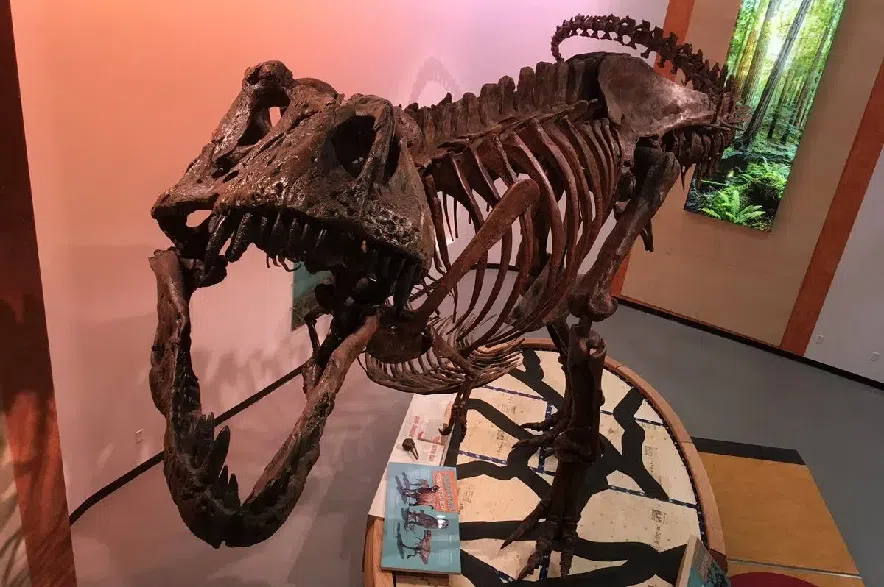A research team from the University of Regina made an important discovery while examining a rib bone from Scotty the tyrannosaurus rex, one of the most famous fossils unearthed in Saskatchewan.
Researchers scanned the bone at the Canadian Light Source synchrotron in Saskatoon, creating a 3D model of the rib and the soft tissue structures inside the 66-million-year-old fossil. The team then turned to chemical analysis to determine what elements and molecules made up the vessels inside.
Read more:
- VIDEO: Regina’s Scotty the T. rex celebrates 30th un-earthing day
- Drumheller’s Tyra the Tyrannosaurus set for tests ahead of possible extinction
- A close look at the research projects at the Royal Saskatchewan Museum
Jerit Mitchell, a PhD physics student at the University of Regina, is the lead author of the study. He said he showed his supervisors a “strange structure” inside one of the scans, but didn’t imagine where it would lead.
“They were quick to point out that what I discovered could possibly be preserved blood vessels, which has since led to a much more expansive research project,” Mitchell said.
The synchrotron’s X-rays of the rib showed a healed fracture, which could have been caused by a fight with another dinosaur. According to a joint statement from the university and the Canadian Light Source, the discovery could provide important information on the healing potential of the tyrannosaurus rex.
“Preserved blood vessel structures, like we have found in Scotty’s rib bone, appear linked to areas where the bone was healing. This is because during the healing process, those areas had increased blood flow to them,” said physics professor Dr. Mauricio Barbi, one of the project’s supervisors.
“This work also provides a new way to compare how injuries healed in extinct animals, like dinosaurs, with living species, such as birds and reptiles, which helps us better understand the biology of the past, and also how life on Earth has evolved over millions of years.”
Dr. Ryan McKellar, the Royal Saskatchewan Museum’s curator of paleontology and an adjunct professor at the University of Regina, said fossils like Scotty are not just museum exhibits, as projects like this one are continuing to advance scientific research.
“Part of our role at the Royal Saskatchewan Museum is to ensure these specimens remain available for research, so it’s exciting to see new technology and collaborations between the RSM, the University of Regina, and the Canadian Light Source revealing discoveries, while keeping the fossils intact for future generations,” McKellar said in a statement.
Mohsen Shakouri, a staff scientist at the Canadian Light Source, said it was “a treat” to be able to help with the project.
“We are pleased that our ultrabright synchrotron light helped the team gain new insights into the physiology of everyone’s favorite T. rex,” Shakouri said.











